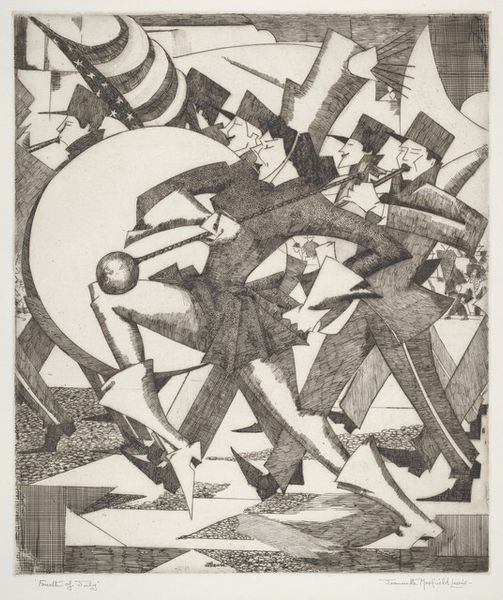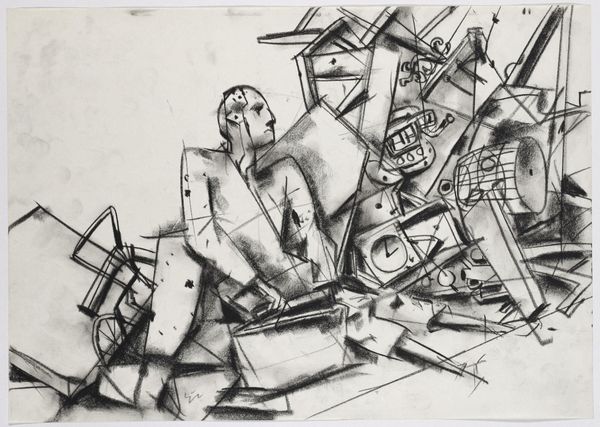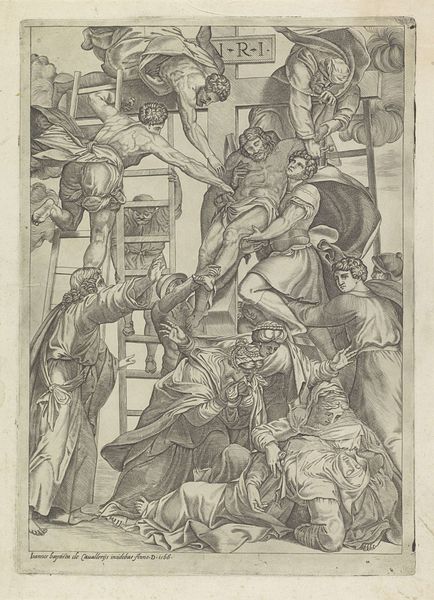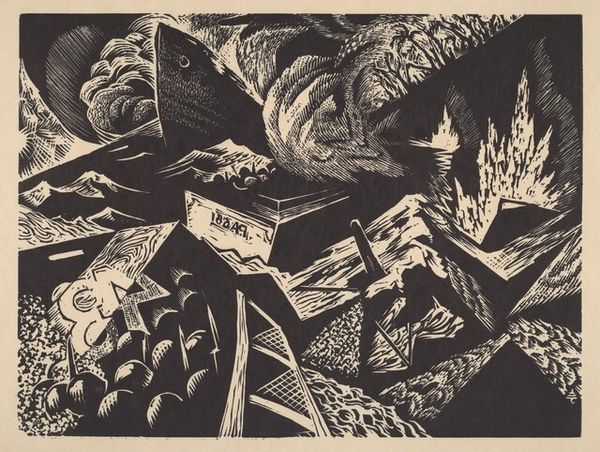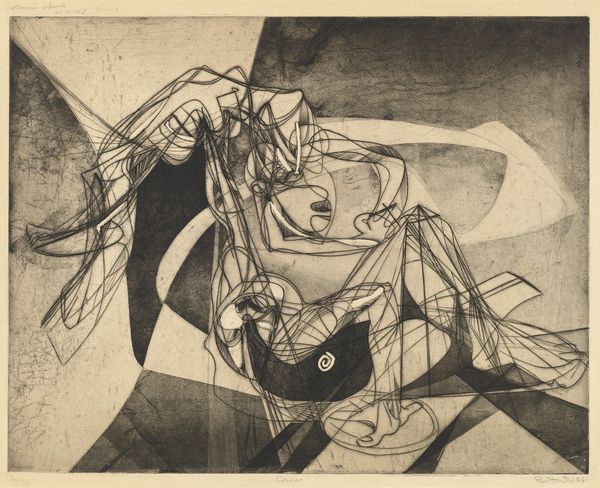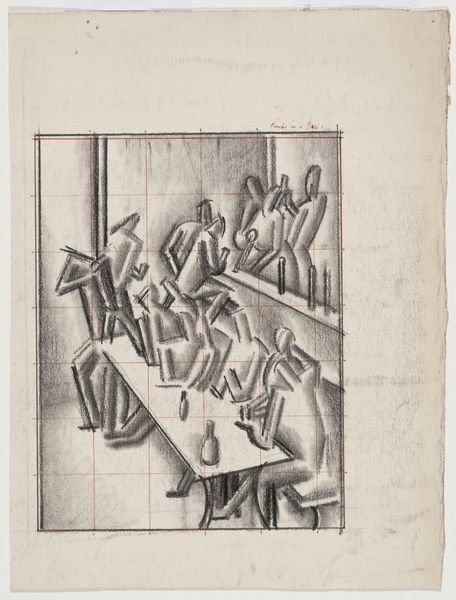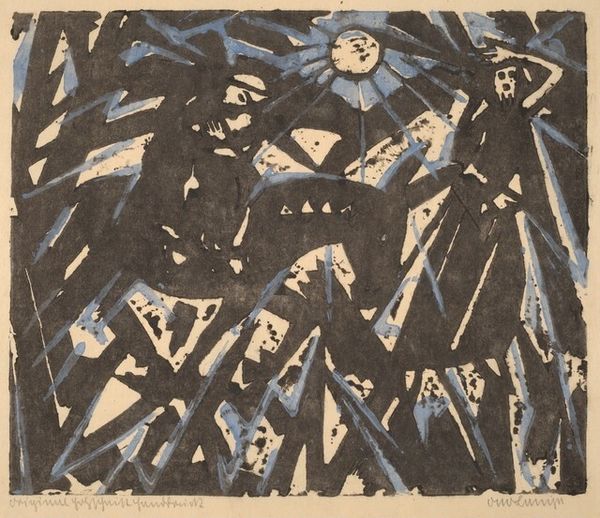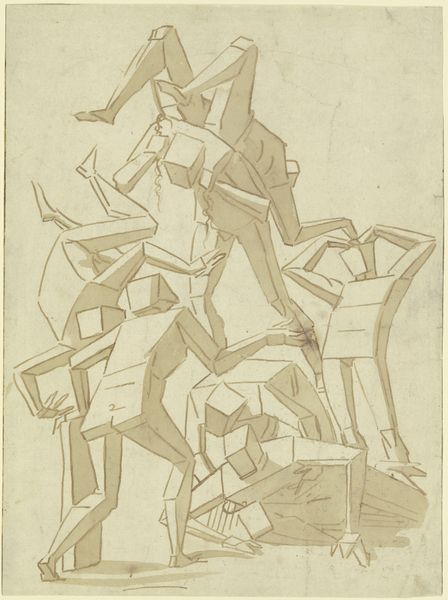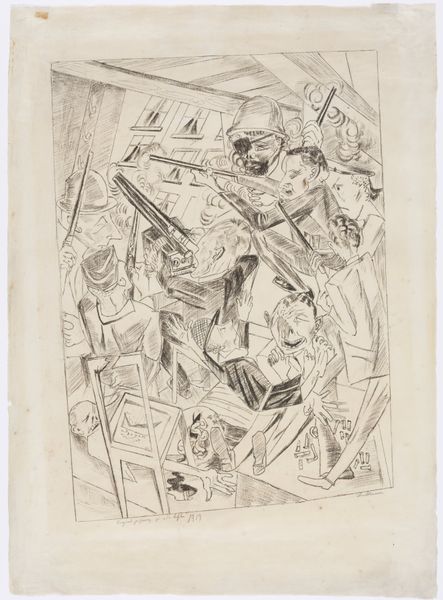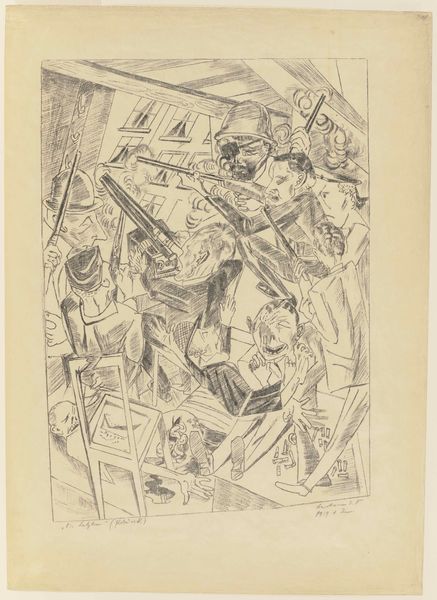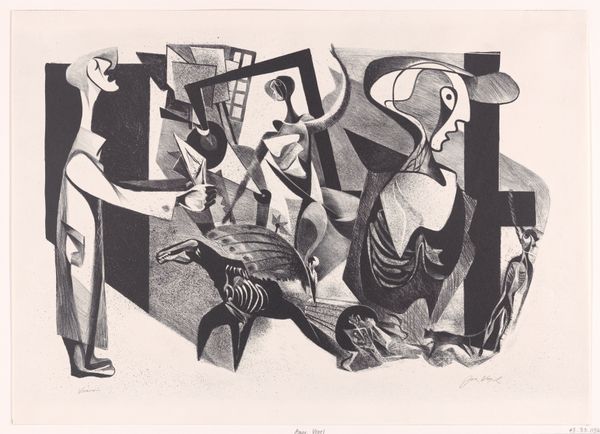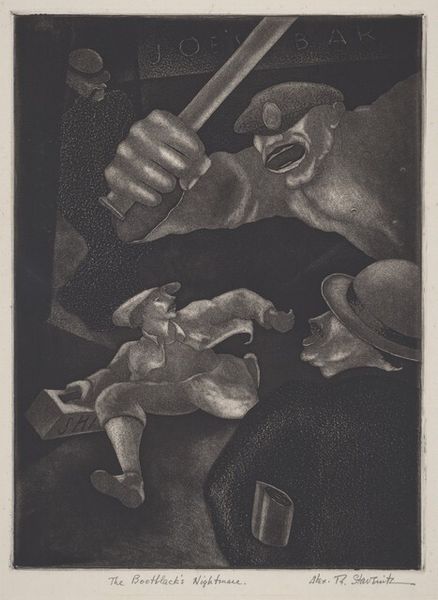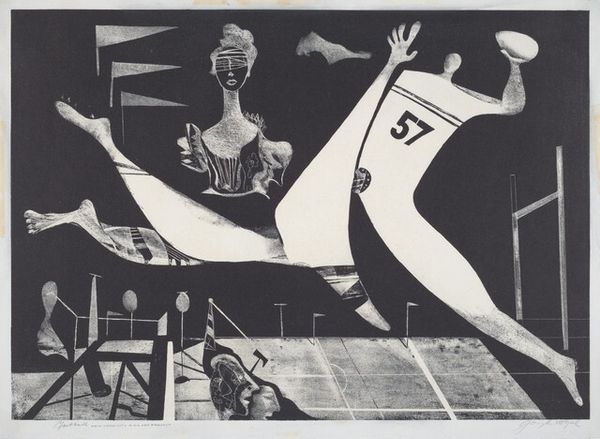
Dimensions: support: 305 x 460 mm
Copyright: © The estate of William Roberts | CC-BY-NC-ND 4.0 DEED, Photo: Tate
Curator: William Roberts, born in 1895, presents in this drawing, now held at the Tate, an unrealized study for his painting, 'The Return of Ulysses'. Editor: It gives me the feeling of alienation—the figures are rendered in angular forms, like automatons, and the gray monochrome adds a layer of emotional detachment. Curator: The figures, in their stylized, almost robotic form, do evoke a sense of disconnect, perhaps reflecting the psychological aftermath of Ulysses' long absence and return. Note how these characters are nearly identical. Editor: Indeed. It's almost unsettling—the sameness in form, a repetition that strips away individuality. The stark shadows also create a disquieting spatial ambiguity. Curator: These shadows are cast by figures like archetypes, their interactions suggesting the complexities of homecoming, the shifting power dynamics, and the loss of innocence experienced by those awaiting his return. Editor: What I appreciate is the way Roberts uses line and form to convey such a complex emotional and intellectual landscape. The interplay between the figures and the space they occupy is brilliant. Curator: Absolutely, the drawing is a fascinating exploration of how myth can reflect very modern psychological states. Editor: A study in alienation conveyed through form. A powerful piece.
Comments
tate 6 months ago
⋮
http://www.tate.org.uk/art/artworks/roberts-drawing-for-the-return-of-ulysses-t01561
Join the conversation
Join millions of artists and users on Artera today and experience the ultimate creative platform.
tate 6 months ago
⋮
When at the Slade School of Art between 1910 and 1913 Roberts was particulary interested in the work of fellow-pupil David Bomberg, who also made a drawing of 'The Return of Ulysses'. This is one of two known studies, both in the Tate Gallery, made by Roberts for his painting of the same title. This drawing pays more attention to naturalistic details than the other two works. However, even here, the artist seems to structure the composition with a series of diagonal lines which begin to override the narrative content of the work. Note, for example, how the limbs of the figures are simplified into a series of unrealistic, robotic shapes. Gallery label, September 2004
